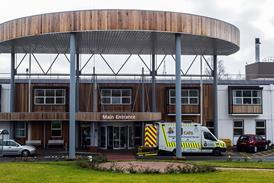Compliance to Getting It Right First Time, is the NHS’ latest best chance of removing avoidable variation. However, it can also disguise the impact made by individual clincians. By Nadeem Moghal
Getting It Right First Time is the latest effort to address doctor generated avoidable variation. The drum beat to GIRFT arguably started with Glover publishing on tonsillectomy variation in 1936.
We then got audit teams, the evidence based medicine movement with the Cochrane Collaboration, the NHS benchmarking network, National Institute for Health and Care Excellence in 1999, Clinical Governance in 2002, and research reports recommending consistent use of protocols.
A tough journey in part because doctors the world over work hard to hold on to their almost priestly and ancient sense of autonomy, and want to self direct – millennia old defining determinants of being a medical professional.
The last national initiative on avoidable variation was RightCare, founded by the national treasure, Sir Muir Gray. It publishes data maps of variation across the country.
I recall a conversation with a paediatric gastroenterologist who concluded that we should be proud of the high paediatric endoscopy rates in Newcastle – we were doing the right thing, unlike the other end of the country. Being a paediatric nephrologist, I didn’t get very far asking about protocols, decision making, risks and comparative diagnostic yields.
The maps help raise questions, but with limited engagement and traction, at least with doctors. Sir Muir has stayed the course establishing the Oxford Centre for Triple Value Healthcare.
GIRFT came along in 2015 – the product of Professor Tim Briggs’ singleminded passion to address what he could no longer tolerate – observable, measurable, negatively impactful variation between consultant orthopaedic surgeons, first at Royal National Orthopaedic Hospital, and then nationally. It takes a particular type of person to take on orthopaedic surgeons and the match was made.
Experiencing the Commander of the British Empire engaging the surgeons in my previous organisation was theatre. The data impossible to fight; the messages clear; the expectations set; without the dramatic death scene. It become evident that GIRFT was going to be an instrument for standards, compliance, accountability and finally something that would overcome the reliance on self-reported audits, flawed in so many ways.
Peer to peer
The key difference between GIRFT and all other efforts – not the data, which has always been there. GIRFT isn’t remote or top down but peer to peer questioning and challenge. As doctors sometimes say, managers come and go, we are here till the end; managers – what do they know about what I do. Peer to peer means that the sometimes openly stated priestly primacy of the medical profession, has no voice. Doctors listen to doctors, usually, eventually.
GIRFT will, if well governanced in the provider, drilled to the detail at consultant level, provide the legitimacy for the improvements, raise the quality of care, prevent avoidable demand for resources, reduce costs, and protect staff and patients from the risks of avoidable variation
The initial GIRFT team visits were interesting to observe – host teams focusing on the positive – we are at or better than expected. Relative silence on the less positive outlier positions, sometimes narrated with interesting explanations. The host team would disperse back to the day job, continuing to work in the same way, generating the same avoidable variation. No governance to draw them back.
The first noticeable change in the process was GIRFT sending an action plan to the trust, after the peer to peer moment – setting detailed expectations of the team to change and remove the variation. Not the MD’s plan. Not a manager’s plan. Not a top down edict.
Recognising the value of GIRFT has prompted trusts to establish the governance to extract value from the national programme; ensuring expectations are met, actions tracked, reported all the way to board. Transparency of data and outcomes revealed in papers for all to see, from ward to board. But there are risks.
There remains a weakness in GIRFT, albeit easily overcome. Avoidable variation is not the direct result of team behaviour. It is first the result of individual doctor decision making – choice of prosthesis, choice of anticoagulant, decision to follow up, using a protocol, or not.
Learned behaviours, group normalisation, unquestioned practices, all become seen as team behaviour. The GIRFT process unintentionally allows the doctor-induced avoidable variation to hide behind the team.
The data presented by GIRFT has to be unpacked to consultant level variation. Even with anonymised data, every consultant will recognise their practice, and that of their colleagues. If the avoidable variation in new-to-follow-up ratios in the ENT team is generated by three of seven consultants, targeting the team doesn’t help – it becomes everyone’s problem, so no one’s problem.
With data at consultant level, the organisation and service team leadership has the wing cover to act on the action plan, with permission to focus on individuals and their decision making and practice – it’s not me, it’s your peers, GIRFT, a board expectation, which means you have to make the changes in your practice, because you are accountable.
GIRFT will, if well governanced in the provider, drilled to the detail at consultant level, provide the legitimacy for the improvements, raise the quality of care, prevent avoidable demand for resources, reduce costs, and protect staff and patients from the risks of avoidable variation.
Compliance to GIRFT is a performance measure for doctors. Therein lies the final risk – resistance to being performance measured and managed. And yet, the cost-effective use of tax payer resources is a moral, priestly virtue – a measure of modern medical professionalism.
































2 Readers' comments